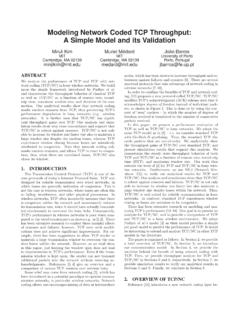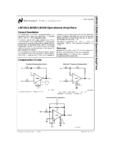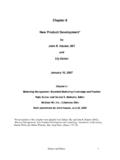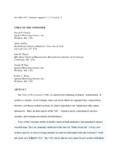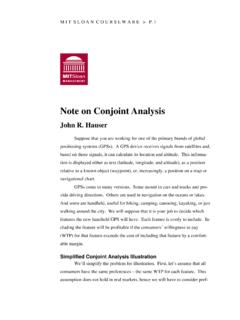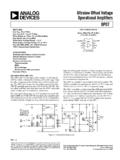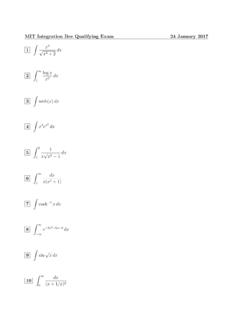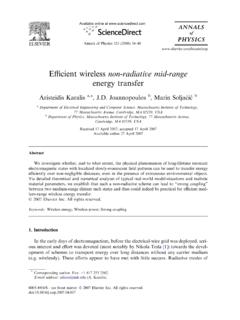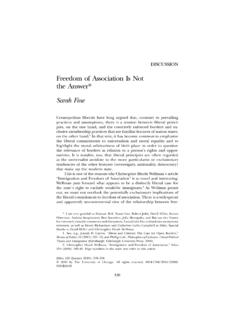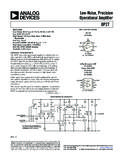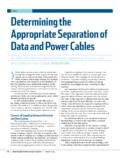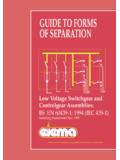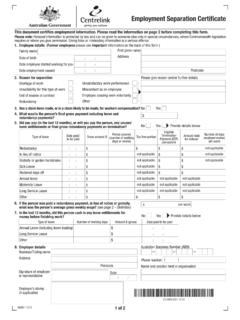Transcription of Cell separation using tilted-angle standing surface ...
1 Cell separation using tilted-angle standing surfaceacoustic wavesXiaoyun Dinga,1, Zhangli Pengb,c,1, Sz-Chin Steven Lina, Michela Gerid, Sixing Lie, Peng Lia, Yuchao Chena, Ming Daob,2,Subra Sureshf,2, and Tony Jun Huanga,2aDepartment of Engineering Science and Mechanics, The Pennsylvania State University, University Park, PA 16802;bDepartment of Materials Science andEngineering, Massachusetts Institute of Technology, Cambridge, MA 02139;cDepartment of Aerospace and Mechanical Engineering, University of NotreDame, Notre Dame, IN 46556;dDepartment of Mechanical Engineering, Massachusetts Institute of Technology, Cambridge, MA 02139;eCell andDevelopmental Biology Program, The Pennsylvania State University, University Park, PA 16802; andfDepartment of Biomedical Engineering and Departmentof Materials Science and Engineering, Carnegie Mellon University, Pittsburgh, PA 15213 Contributed by Subra Suresh, July 22, 2014 (sent for review June 9, 2014) separation of cells is a critical process for studying cell properties,disease diagnostics, and therapeutics.
2 Cell sorting by acoustic wavesoffers a means to separate cells on the basis of their size and physicalproperties in a label-free, contactless, and biocompatible manner. Theseparation sensitivity and efficiency of currently available acoustic-based approaches, however, are limited, thereby restricting theirwidespread application in research and health diagnostics. In thiswork, we introduce a unique configuration of tilted-angle standingsurface acoustic waves (taSSAW), which are oriented at an optimallydesigned inclination to the flow direction in the microfluidic demonstrate that this design significantly improves the efficiencyand sensitivity of acoustic separation techniques.
3 To optimize ourdevice design, we carried out systematic simulations of cell trajecto-ries, matching closely with experimental results. using numericallyoptimized design of taSSAW, we successfully separated 2- and 10- m-diameter polystyrene beads with a separation efficiency of 99%,and separated and m-polystyrene beads with an effi-ciency of 97%. We illustrate that taSSAW is capable of effectivelyseparating particles cells of approximately the same size and den-sity but different compressibility. Finally, we demonstrate the ef-fectiveness of the present technique for biological biomedicalapplications by sorting MCF-7 human breast cancer cells from non-malignant leukocytes, while preserving the integrity of the sepa-rated cells.
4 The method introduced here thus offers a unique routefor separating circulating tumor cells, and for label-free cell sepa-ration with potential applications in biological research, diseasediagnostics, and clinical separation |microfluidics|cancer cell separation |acoustofluidics|tilt-angle optimizationMany applications in biology and medicine call for efficientand reliable separation of particles and cells for diseasediagnosis, genetic analysis, drug screening, and therapeutics (1 6). Cells can be separated on the basis of their surface molecularmarkers or physical characteristics such as density, size, stiffness,or electric impedance (7 10). When separating cells with distinctphysical properties, using methods that exploit differences in cells physical parameters could be advantageous due to their label-freenature and ease of use (11, 12).
5 Many techniques are available toseparate cells based on physical properties; they include filtration,centrifugation, acoustics, optics, and dielectrophoresis (13 27).Among these techniques, acoustic-based approaches are advan-tageous because of their biocompatibility and label-free nature(25, 27 32). The so-called acoustic tweezers technologies, whichcan perform highly precise cell manipulations, are particularlypromising for cell- separation applications and offer additionaladvantages in ease of use and versatility (27, 29). Despite theseadvantages, acoustic separation has not been widely used inpractical cell- separation applications due to their relatively lowseparation sensitivity and separation is often achieved by establishing a standingacoustic field within a flow channel.
6 When a standing acoustic fieldis present in a fluid medium, particles (or cells) populating the fluidwill be pushed toward regions with minimal acoustic radiationpressure (pressure nodes) (25). Particles with different sizesand/or physical properties will experience different acousticradiation forces and will require different times to migrate to thepressure nodes, thus providing clear identifiers for separation . Inall of the existing acoustic separation approaches, the fluid flowdirection is parallel to the standing acoustic wave direction (27).With such a configuration, the maximal separation distance islimited to a quarter of the acoustic wavelength.
7 As a result, acousticseparation techniques often have low separation efficiency ( , afraction of the target particles are not separated from the nontargetparticles) and low sensitivity ( , two sets of particles with small sizedifferences between them cannot be separated from each other). Ifthese limitations could be overcome, acoustic separation couldoffer a powerful means for label-free separation of cells withmany applications in biology research, disease diagnosis, andclinical this work, we propose a previously unavailable approachto acoustic separation of particles and cells by using tilted-anglestanding surface acoustic waves (taSSAW). Here, the pressurenodal lines induced by the standing surface acoustic wave (SSAW)are inclined at a specific angle to the flow direction, rather thanbeing parallel to each other.
8 With this design, a particle in a fluidSignificanceWe have developed a unique approach for the separation ofparticles and biological cells through standing surface acousticwaves oriented at an optimum angle to the fluid flow directionin a microfluidic device. This experimental setup, optimized bysystematic analyses, has been used to demonstrate effectiveseparation based on size, compressibility, and mechanical prop-erties of particles and cells. The potential of this method forbiological biomedical applications was demonstrated throughthe example of isolating MCF-7 breast cancer cells from whiteblood cells. The method offers a possible route for label-freeparticle or cell separation for many applications in research,disease diagnosis, and drug-efficacy contributions: , , , and designed research; , , , , , , and performed research; , , , , , , , , , and analyzed data; and , , , , , , , , and the of interest statement: and have filed a patent based on a portion ofthe work outlined in this paper; , , , , , , and have fileda patent based on the work presented in this available online through the PNAS open access and contributed equally to this whom correspondence may be addressed.
9 Email: or article contains supporting information online 12997|PNAS|September 9, 2014|vol. 111|no. experiences both the acoustic radiation force and thelaminar drag force. The competition between these two forcesdetermines the position of the particle and defines its movementalong the pressure nodal lines, which lie across the channel ata particular angle of inclination to the flow. As a result, the mi-gration distance of the particle along the direction perpendicularto the flow could be a few times or tens of times the acousticwavelength, depending on the geometry of the channel. Thismigration distance is significantly higher than that of the tradi-tional acoustic separation approaches.
10 The ability of taSSAWto achieve much larger separation distances leads to betterseparation sensitivity. In addition, the taSSAW design usesmultiple pressure nodal lines for separation instead of only onepressure nodal line in the conventional acoustic separationdesigns. Because there are many parallel pressure nodal lineslying across the flow, target particles that escape from onepressure nodal line can be trapped again by the neighboringnodal line and be separated from the nontarget particles. Thismultiple-node design also produces higher separation develop a robust scientific basis for optimizing the designof this taSSAW method and to guide our experiments, we havedeveloped computational simulations of particle cell trajectoriesin a taSSAW field.
